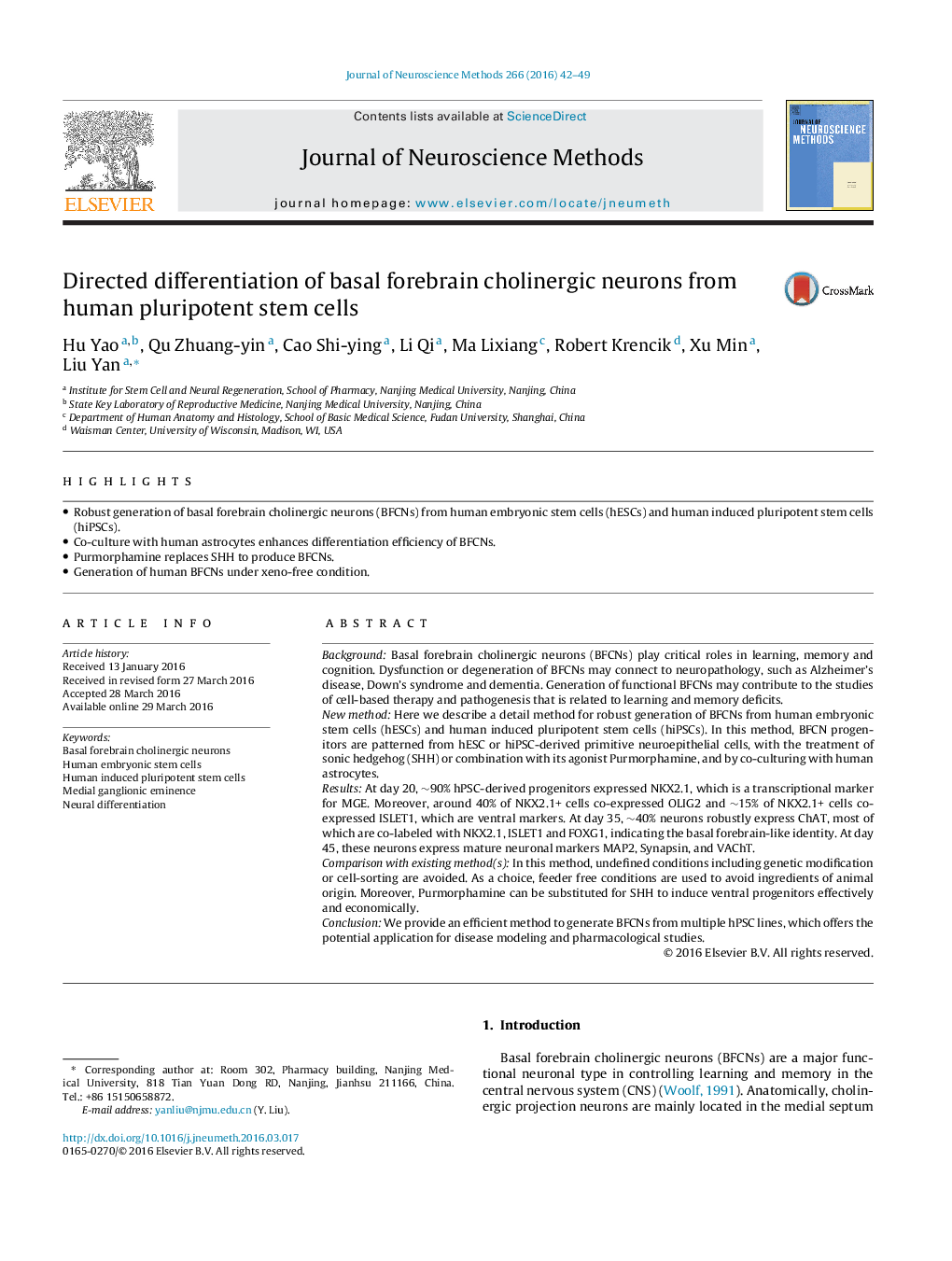| کد مقاله | کد نشریه | سال انتشار | مقاله انگلیسی | نسخه تمام متن |
|---|---|---|---|---|
| 6267714 | 1645517 | 2016 | 8 صفحه PDF | دانلود رایگان |
- Robust generation of basal forebrain cholinergic neurons (BFCNs) from human embryonic stem cells (hESCs) and human induced pluripotent stem cells (hiPSCs).
- Co-culture with human astrocytes enhances differentiation efficiency of BFCNs.
- Purmorphamine replaces SHH to produce BFCNs.
- Generation of human BFCNs under xeno-free condition.
BackgroundBasal forebrain cholinergic neurons (BFCNs) play critical roles in learning, memory and cognition. Dysfunction or degeneration of BFCNs may connect to neuropathology, such as Alzheimer's disease, Down's syndrome and dementia. Generation of functional BFCNs may contribute to the studies of cell-based therapy and pathogenesis that is related to learning and memory deficits.New methodHere we describe a detail method for robust generation of BFCNs from human embryonic stem cells (hESCs) and human induced pluripotent stem cells (hiPSCs). In this method, BFCN progenitors are patterned from hESC or hiPSC-derived primitive neuroepithelial cells, with the treatment of sonic hedgehog (SHH) or combination with its agonist Purmorphamine, and by co-culturing with human astrocytes.ResultsAt day 20, â¼90% hPSC-derived progenitors expressed NKX2.1, which is a transcriptional marker for MGE. Moreover, around 40% of NKX2.1+ cells co-expressed OLIG2 and â¼15% of NKX2.1+ cells co-expressed ISLET1, which are ventral markers. At day 35, â¼40% neurons robustly express ChAT, most of which are co-labeled with NKX2.1, ISLET1 and FOXG1, indicating the basal forebrain-like identity. At day 45, these neurons express mature neuronal markers MAP2, Synapsin, and VAChT.Comparison with existing method(s)In this method, undefined conditions including genetic modification or cell-sorting are avoided. As a choice, feeder free conditions are used to avoid ingredients of animal origin. Moreover, Purmorphamine can be substituted for SHH to induce ventral progenitors effectively and economically.ConclusionWe provide an efficient method to generate BFCNs from multiple hPSC lines, which offers the potential application for disease modeling and pharmacological studies.
Journal: Journal of Neuroscience Methods - Volume 266, 15 June 2016, Pages 42-49
